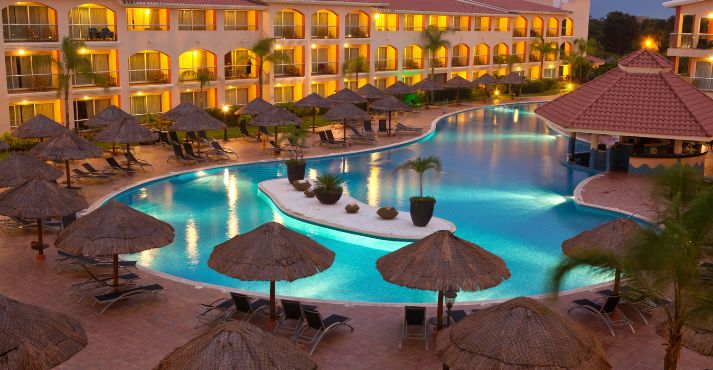Diving into the hospitality industry, we explore the concept of Average Length of Stay (ALOS). This pivotal metric provides insights into guest behavior, occupancy rates, and the overall performance of hotels.
This metric plays a crucial role in decoding the patterns of guest stays and influencing the operational landscape of hotels.
In this guide, we’ll uncover the significance of ALOS, shedding light on its impact on guest behavior trends and how it contributes to the occupancy rates of hotels.
Let’s dive into the practicalities of this critical metric and understand how it integrates into the fabric of successful hotel management.
Understanding Average Length of Stay (ALOS)
Definition of ALOS:
Average Length of Stay (ALOS) is a pivotal metric in the hotel industry, representing the average number of nights a guest stays at a hotel during a specific period. This metric provides valuable insights into hotel operations management and guest interactions.
Guest Satisfaction Gauge:
ALOS serves as an essential tool for gauging guest satisfaction. Understanding how long guests choose to stay provides hotels with valuable feedback on the overall experience they offer.
Higher ALOS often correlates with positive guest experiences, indicating satisfaction with services, amenities, and overall hospitality.
Revenue Potential Assessment
In hotel management, ALOS is a critical factor in revenue forecasting. By analyzing the average length of guest stays, hotels can project revenue potential more accurately. This insight allows for strategic pricing, package offerings, and optimization of revenue streams.
Operational Efficiency Indicator:
Efficiency in hotel operations is intricately linked to ALOS. It influences staff planning, room turnover rates, and overall resource management. A hotel with a clear understanding of its ALOS can streamline operations, ensuring staffing levels align with guest demands and enhancing overall efficiency.
Understanding Average Length of Stay (ALOS): A Simple Formula for Insightful Hotel Management
When managing a hotel successfully, grasping the Average Length of Stay (ALOS) is like having a powerful lens that brings guest behavior into sharp focus. ALOS, in simple terms, is the average number of nights a guest spends at a hotel during a specific period.
Let’s break down the formula and explore why this metric is a game-changer for hoteliers.
The Formula:
ALOS = Total Number of Room Nights Sold / Total Number of Reservations
Now, let’s simplify this formula:
Total Number of Room Nights Sold: This is the sum of all the nights guests have stayed in your hotel during the specified period.
Total Number of Reservations: This is the total count of reservations made, regardless of the duration of stay.
Why is ALOS Important?
1. Simplicity Leads to Actionable Insights:
ALOS doesn’t require complex calculations. It’s a straightforward division that yields a number reflecting how long, on average, guests choose to stay. This simplicity makes ALOS highly practical and easy to interpret.
2. Shaping Marketing Strategies:
ALOS is a strategic tool for hotel marketing. By understanding the average duration guests prefer, hotels can tailor marketing campaigns. Whether encouraging longer stays or crafting attractive packages, ALOS insights guide marketing efforts effectively.
3. Enhancing Guest Experiences:

ALOS isn’t just a statistic; it’s a compass for guest satisfaction. Knowing how long guests stay allows hotels to customize services and amenities, creating an environment where guests feel accommodated and truly at home.
Importance of ALOS in Hotel Management
In the complex world of hotel management, where every decision shapes the guest experience and impacts the bottom line, the Average Length of Stay (ALOS) emerges as a guiding force.
Let’s explore the profound significance of ALOS and how it influences critical aspects of hotel management.
1. ALOS and Pricing Strategies:
ALOS plays a pivotal role in shaping pricing strategies. By understanding how long guests typically stay, hotels can optimize room rates.
Competitive pricing might attract more bookings for shorter stays, while more extended stays could benefit from enticing package deals. ALOS, in essence, becomes a cornerstone in the strategic dance of pricing decisions.
2. Revenue Management and ALOS:
Revenue optimization is an art, and ALOS is a masterstroke. Hoteliers use ALOS insights to forecast demand accurately.
This forecasting proficiency enables strategic decisions on room availability, pricing adjustments, and promotional offers. The result is a finely-tuned revenue management strategy that maximizes profitability.
3. Elevating the Guest Experience:
ALOS isn’t just a metric; it’s a compass for enhancing the guest experience. Knowing the average length of stay allows hotels to tailor services, amenities, and overall experiences to align with guest preferences.
From personalized service for long-term guests to crafting engaging short-stay packages, ALOS influences how guests perceive and enjoy their stay.
Factors That Shape Your Hotel Stay Duration
Staying at a hotel involves more than just finding a place to sleep. The length of your stay is influenced by various factors, and let’s dive deeper into these aspects.
1. Accommodation Type:

This kind of accommodation sets the stage. Think of it as choosing between a cozy mountain cabin or a vibrant city hotel.
Luxury resorts may invite you to extend your stay, offering a range of amenities and experiences. On the other hand, business hotels cater to efficiency, often resulting in shorter stays.
2. Seasonal Vibes:
Hotels experience seasons, too. Picture it like a beach bustling with activity in the summer but quieter in the winter. Busy seasons might lead to shorter stays due to high demand, while off-peak times could encourage longer, more leisurely visits.
3. Guest Demographics:
Who’s staying matters. A family on vacation may opt for an extended stay to explore all the attractions. Conversely, business travelers might have a shorter duration, focused on their work commitments. Understanding the diverse needs of guests is crucial.
4. Dynamic Nature:
Consider your stay as a dynamic composition, like a musical piece that shifts in tempo. Hotels must adjust their services and offerings to match the changing rhythms of guest preferences, creating an experience that feels just right.
Unlocking ALOS Trends in the Hospitality Scene
Staying abreast of trends in Average Length of Stay (ALOS) is crucial for hotels navigating the dynamic landscape of the hospitality industry. Let’s delve into the currents shaping ALOS and how hotels adjust their strategies to meet evolving expectations.
1. Understanding ALOS Trends:
ALOS is not static; it’s a living metric influenced by changing guest preferences and industry dynamics. Current trends reflect a shift in how guests engage with accommodation options, demanding more personalized and flexible experiences.
2. Industry Dynamics at Play:
The hospitality industry is akin to a bustling marketplace, with constant shifts in consumer behavior and technological advancements. ALOS trends mirror these dynamics, showcasing how hotels adapt to stay relevant and competitive.
3. Adapting Strategies for Changing Expectations:
As guest expectations evolve, hotels are adjusting their strategies. Whether incorporating technology for seamless experiences or offering unique packages, the focus is enhancing guest satisfaction and encouraging extended stays.
4. Evolving Stay Duration Strategies:
ALOS is no longer a mere statistic; it’s a strategic consideration. Hotels embrace guest-centric strategies, tailoring services and amenities to match diverse preferences. From curated experiences to loyalty programs, the goal is to create a stay that resonates with each guest.
Wrapping Up Insights
In our journey through the intricacies of the hospitality industry, we’ve delved into the domain of Average Length of Stay (ALOS), an instrumental metric beyond mere numbers.
ALOS serves as a key performance indicator, offering profound insights into guest behavior, influencing occupancy rates, and shaping the overall success of hotels.
The key takeaway from our exploration is the pivotal role that ALOS plays in hotel guest experience and financial performance. It’s not just a number; it’s a strategic tool that informs decisions and contributes to guest satisfaction.
Hotels, understanding the patterns revealed by ALOS, can craft strategies that enhance both the stay duration and the financial success of their establishments.
As we wrap up our insights on ALOS, we look toward the future of stay duration metrics.
The trends indicate an evolving landscape where ALOS will continue to guide hotel management, adapting to changing guest preferences and ensuring a harmonious balance between satisfaction and success.









